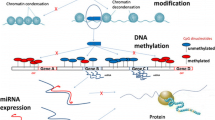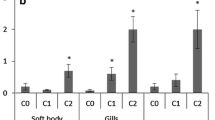Abstract
Manganese (Mn) is considered as an emerging metal contaminant in the environment. However, its potential interactions with companying toxic metals and the associated mixture effects are largely unknown. Here, we investigated the toxicity interactions between Mn and two commonly seen co-occurring toxic metals, Pb and Cd, in a model organism the nematode Caenorhabditis elegans. The acute lethal toxicity of mixtures of Mn+Pb and Mn+Cd were first assessed using a toxic unit model. Multiple toxicity endpoints including reproduction, lifespan, stress response, and neurotoxicity were then examined to evaluate the mixture effects at sublethal concentrations. Stress response was assessed using a daf-16::GFP transgenic strain that expresses GFP under the control of DAF-16 promotor. Neurotoxicity was assessed using a dat-1::GFP transgenic strain that expresses GFP in dopaminergic neurons. The mixture of Mn+Pb induced a more-than-additive (synergistic) lethal toxicity in the worm whereas the mixture of Mn+Cd induced a less-than-additive (antagonistic) toxicity. Mixture effects on sublethal toxicity showed more complex patterns and were dependent on the toxicity endpoints as well as the modes of toxic action of the metals. The mixture of Mn+Pb induced additive effects on both reproduction and lifespan, whereas the mixture of Mn+Cd induced additive effects on lifespan but not reproduction. Both mixtures seemed to induce additive effects on stress response and neurotoxicity, although a quantitative assessment was not possible due to the single concentrations used in mixture tests. Our findings demonstrate the complexity of metal interactions and the associated mixture effects. Assessment of metal mixture toxicity should take into consideration the unique property of individual metals, their potential toxicity mechanisms, and the toxicity endpoints examined.






Similar content being viewed by others
References
Ahmadi FA, Grammatopoulos TN, Poczobutt AM, Jones SM, Snell LD, Das M (2008) Dopamine selectively sensitizes dopaminergic neurons to rotenone-induced apoptosis. Neurochem Res 33:886–901
Aschner M, Guilarte TR, Schneider JS, Zheng W (2007) Manganese: recent advances in understanding its transport and neurotoxicity. Toxicol Appl Pharmacol 221:131–147
Aschner M, Chen P, Martinez-Finley EJ, Bornhorst J, Chakraborty S (2013) Metal-induced neurodegeneration in C. elegans. Front Aging Neurosci 5
Baird DJ, Barber I, Bradley M, Soares AMVM, Calow P (1991) A comparative study of genotype sensitivity to acute toxic stress using clones of Daphnia magna Straus. Ecotoxicol Environ Saf 21(3):257–265
Baumeister R, Schaffitzel E, Hertweck M (2006) Endocrine signaling in Caenorhabditis elegans controls stress response and longevity. J Endocrinol 190:191–202
Benedetto A, Au C, Avila DS, Milatovic D, Aschner M (2010) Extracellular dopamine potentiates Mn-induced oxidative stress, lifespan reduction, and dopaminergic neurodegeneration in a BLI-3-dependent manner in Caenorhabditis elegans. PLoS Genet 6:e1001084
Bouchard M, Laforest F, Vandelac L, Bellinger D, Mergler D (2007) Hair manganese and hyperactive behaviors: pilot study of school-age children exposed through tap water. Environ Health Perspect 115:122–127
Broderius SJ (1990) Modeling the joint toxicity of xenobiotics to aquatic organisms: basic concepts and approaches. In: Mayes MA, Barron MG (eds) Aquatic toxicology and risk assessment, Vol. 14. STP 1124. American Society for TESTING AND materials, Philadephia, PA, pp 107–127
Burton NC, Guilarte TR (2009) Manganese neurotoxicity: lessons learned from longitudinal studies in nonhuman primates. Environ Health Perspect 117:325–332
Cedergreen N (2014) Quantifying synergy: a systematic review of mixture toxicity studies within environmental toxicology. PLoS One 9(5):e96580
Cersosimo MG, Koller WC (2006) The diagnosis of manganese-induced parkinsonism. Neurotoxicology 27:340–346
Chen P, DeWitt MR, Bornhorst J, Soares FA, Mukhopadhyay S, Bowman AB (2015) Age- and manganese-dependent modulation of dopaminergic phenotypes in a C. elegans DJ-1 genetic model of Parkinson’s disease. Metallomics 7:289–298
Cooper NL, Joseph RB, Kumar A (2009) Toxicity of copper, lead, and zinc mixtures to Ceriodaphnia dubia and Daphnia carinata. Ecotoxicol Environ Saf 72(5):1523–1528
Cuypers A, Plusquin M, Remans T, Jozefczak M, Keunen E, Gielen H, Opdenakker K, Nair AR, Munters E, Artois TJ, Nawrot T, Vangronsveld J, Smeets K (2010) Cadmium stress: an oxidative challenge. Biometals 23(5):927–940. https://doi.org/10.1007/s10534-010-9329-x
Davies PH, Brinkman SF (1994) Acute and chronic toxicity of manganese to exposed and unexposed rainbow and brown trout. Fort Collins, CO, Colorado Division of Wildlife (Federal Aid Project #F-243R-1) [cited in Reimer, 1999]
Flora G, Deepesh G, Tiwari AR (2012) Toxicity of lead: a review with recent updates. InterdiscipToxicol 5(2):47–58 PMC. Web 22 June 2017
Gao G, Wu Y, Guo Y (2003) Survey on chronic occupational hazards in welders. Chin J Ind Med:107–108
Garrick MD, Dolan KG, Horbinski C, Ghio AJ, Higgins D, Porubcin M (2003) Dmt1: a mammalian transporter for multiple metals. Biometals 16:41–54
Gunter TE, Gavin CE, Aschner M, Gunter KK (2006) Speciation of manganese in cells and mitochondria: a search for the proximal cause of manganese neurotoxicity. Neurotoxicology 27:765–776
Hall J, Haas KL, Freedman JH (2012) Role of MTL-1, MTL-2, and CDR-1 in mediating cadmium sensitivity in Caenorhabditis elegans. Toxicol Sci 128(2):418–426
Harford AJ, Mooney TJ, Trenfield MA, van Dam RA (2015) Manganese toxicity to tropical freshwater species in low hardness water. Environ Toxicol Chem 34(12):2856–2863
Ingersoll RT, Montgomery EB, Aposhian HV (1999) Central nervous system toxicity of manganese. II: cocaine or reserpine inhibit manganese concentration in the rat brain. Neurotoxicology 20:467–476
International Manganese Institute (2009) The chronic toxicity of manganese to the amphipod crustacean Hyalella Azteca using a standardized flow-through experiment. Albany, Oregon, USA
Jonker MJ, Svendsen C, Bedaux JJM, Bongers M, Kammenga JE (2005) Significance testing of synergistic/antagonistic, dose level-dependent, or dose ratio-dependent effects in mixture dose-response analysis. Environ Toxicol Chem 24(10):2701–2713
Kern CH, Smith DR (2011) Preweaning mn exposure leads to prolonged astrocyte activation and lasting effects on the dopaminergic system in adult male rats. Synapse 65:532–544
Khan K, Factor-Litvak P, Wasserman GA, Liu X, Ahmed E, Parvez F (2011) Manganese exposure from drinking water and children's classroom behavior in Bangladesh. Environ Health Perspect 119:1501–1506
Kraak MHS, Lavy D, Schoon H, Toussaint M, Peeters WHM, van Straalen NM (1994) Ecotoxicity of mixtures of metals to the zebra mussel Dreissena polymorpha. Environ Toxicol Chem 13(1):109–114
Leung MC, Williams PL, Benedetto A, Au C, Helmcke KJ, Aschner M, Meyer JN (2008) Caenorhabditis elegans: an emerging model in biomedical and environmental toxicology. Toxicol Sci 106(1):5–28
Li MS, Yang SX (2008) Heavy metal contamination in soils and phytoaccumulation in a manganese mine wasteland, South China. Air Soil Water Res 1:31–41
Liang Y, Xiang Q (2004) Occupational health services in PR China. Toxicology 198:45–54
Ma H, Glenn TC, Jagoe CH, Jones KL, Williams PL (2009) A transgenic strain of the nematode C. elegans as a biomonitor for heavy metal contamination. Environ Toxicol Chem 28(6):1311–1318
Marking LL (1985) Toxicity of chemical mixtures. In: Rand GM, Petrocellim SR (eds) Fundamentals of aquatic toxicology: methods and applications. Hemisphere, New York, pp 164–176
Milatovic D, Zaja-Milatovic S, Gupta RC, Yu Y, Aschner M (2009) Oxidative damage and neurodegeneration in manganese-induced neurotoxicity. Toxicol Appl Pharmacol 240:219–225
Neal AP, Guilarte TR (2013) Mechanisms of lead and manganese neurotoxicity. Toxicol Res 2:99–114
O’Neal and Zheng (2015) Manganese toxicity upon overexposure: a decade in review. Curr Environ Health Rep 2(3):315–328
Ogg S, Paradis S, Gottlieb S, Patterson GI, Lee L, Tissenbaum HA (1997) The fork head transcription factor daf-16 transduces insulin-like metabolic and longevity signals in C. elegans. Nature 389:994–999
Paris I, Segura-Aguilar J (2011) The role of metal ions in dopaminergic neuron degeneration in parkinsonism and parkinson’s disease. Monatshefte für Chemie -Chemical Monthly 142:365–374
Pinsino A, Matranga V, Carmela Roccheri M (2012) Manganese: a new emerging contaminant in the environment. In: Srivastava JK (ed) Environmental Contamination, pp 17–35 ISBN 978-953-51-0120-8
Pluskota A, Horzowski E, Bossinger O, Mikecz A (2009) In Caenorhabditis elegans Nanoparticle-Bio-Interactions Become Transparent: Silica-Nanoparticles Induce Reproductive Senescence. PLoS One 4(8):e6622
Posthuma L, Baerselman R, Van Veen RP, Dirven-Van BEM (1997) Single and joint toxic effects of copper and zinc on reproduction of Enchytraeus crypticusin relation to sorption of metals in soils. Ecotoxicol Environ Saf 38(2):108–121
Rai A, Maurya SK, Khare P, Srivastava A, Bandyopadhyay S (2010) Characterization of developmental neurotoxicity of As, Cd, and Pb mixture: synergistic action of metal mixture in glial and neuronal functions. Toxicol Sci 118:586–601
Roh JY, Lee J, Choi J (2006) Assessment of stress-related gene expression in the heavy metal-exposed nematode Caenorhabditis elegans: a potential biomarker for metal-induced toxicity monitoring and environmental risk assessment. Environ Toxicol Chem 25:2946–2956
Sawin ER, Ranganathan R, Horvitz HR (2000) C. elegans locomotory rate is modulated by the environment through a dopaminergic pathway and by experience through a serotonergic pathway. Neuron 26(3):619–631
Settivari R, Levora J, Nass R (2009) The divalent metal transporter homologues SMF-1/2 mediate dopamine neuron sensitivity in caenorhabditis elegans models of manganism and Parkinson disease. J Biol Chem 284:35758–35768
Settivari R, VanDuyn N, LeVora J, Nass R (2013) The Nrf2/SKN-1-dependent glutathione S-transferase pi homologue GST-1 inhibits dopamine neuron degeneration in a Caenorhabditis elegans model of manganism. Neurotoxicology 38:51–60
Stiernagle T (2006) Maintenance of C. elegans. WormBook, ed. The C. elegans research community, WormBook, https://doi.org/10.1895/wormbook.1.101.1, http://www.wormbook.org
Sunda WG, Huntsman SA (1998a) Control of Cd concentrations in a coastal diatom by interactions among free ionic Cd, Zn, and Mn in seawater. Environ Sci Technol 32:2961–2968
Sunda WG, Huntsman SA (1998b) Interactive effects of external manganese, the toxic metals copper and zinc, and light in controlling cellular manganese and growth in a coastal diatom. Limnol Oceanogr 43:1467–1475
Thompson J, Bannigan J (2008) Cadmium: toxic effects on the reproductive system and the embryo. Reprod Toxicol 25:304–315
Times GRH (2003) Personal injury litigation against welding rod manufacturers. GeneralCologne Re Hazardous Times 1–5
Utgikar VP, Chaudhary N, Koeniger A, Tabak HH, Haines JR, Govind R (2004) Toxicity of metals and metal mixtures: analysis of concentration and time dependence for zinc and copper. Water Res 38(17):3651–3658
Van Gestel CAM, Paul JH (1997) Interaction of Cd and Zn toxicity for Folsomia candida Willem (Collembola: Isotomidae) in relation to bioavailability in soil. Environ Toxicol Chem 16(6):1177–1186
Verity MA (1995) Nervous system. In: Goyer RA, Klaassen CD, Waalkes MP (eds) Metal toxicology. Academic Press, San Diego, pp 199–226
Vijver MG, Elliott EG, Peijenbury WJ, de Snoo GR (2011) Response predictions for organisms water-exposed to metal mixtures: a meta-analysis. Environ Toxicol Chem 30(6):1482–1487
Wah Chu K, Chow KL (2002) Synergistic toxicity of multiple heavy metals is revealed by a biological assay using a nematode and its transgenic derivative. Aquat Toxicol 61:53–64
Wang X (2003) 1160 welders’ health condition analysis. Occup Health 19:9–10 [in Chinese]
Wang B, Du Y (2013) Cadmium and its neurotoxic effects. Oxidative medicine and cellular longevity. Volume 2013. Article ID 898034
Weltje L (1998) Mixture toxicity and tissue interactions of Cd, Cu, Pb and Zn in earthworms (Oligochaeta) in laboratory and field soils: a critical evaluation of data. Chemosphere 36(12):2643–2660
Williams PL, Dusenbery DB (1990) Aquatic toxicity testing using the nematode, Caenorhabditis elegans. Environ Toxicol Chem 9:1285–1290
Acknowledgements
This work was conducted when C. Lu held a visiting scholar position at the University of Wisconsin-Milwaukee through the support of the Education Department of Guangxi Zhuang Autonomous Region, People’s Republic of China. The work was supported by the University of Wisconsin-Milwaukee through a start-up fund awarded to H. Ma.
Author information
Authors and Affiliations
Corresponding author
Additional information
Responsible editor: Philippe Garrigues
Rights and permissions
About this article
Cite this article
Lu, C., Svoboda, K.R., Lenz, K.A. et al. Toxicity interactions between manganese (Mn) and lead (Pb) or cadmium (Cd) in a model organism the nematode C. elegans. Environ Sci Pollut Res 25, 15378–15389 (2018). https://doi.org/10.1007/s11356-018-1752-5
Received:
Accepted:
Published:
Issue Date:
DOI: https://doi.org/10.1007/s11356-018-1752-5




